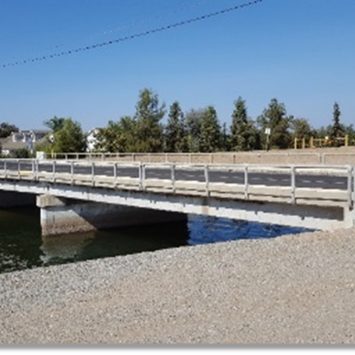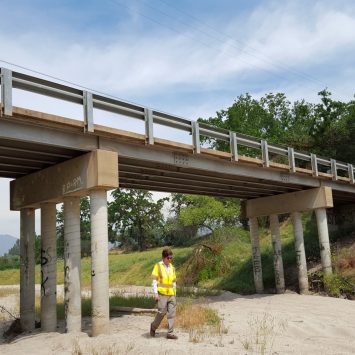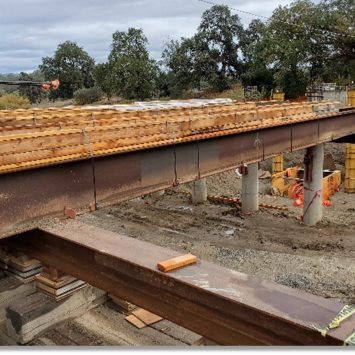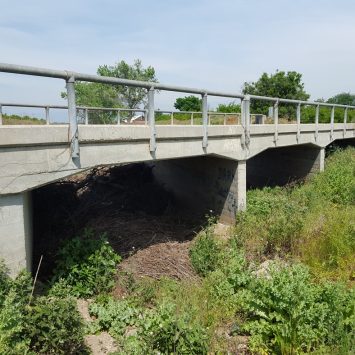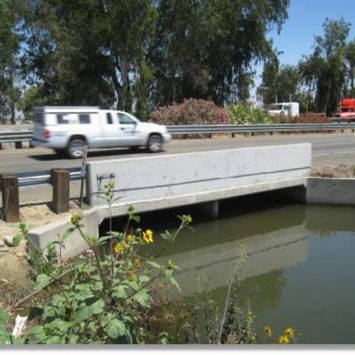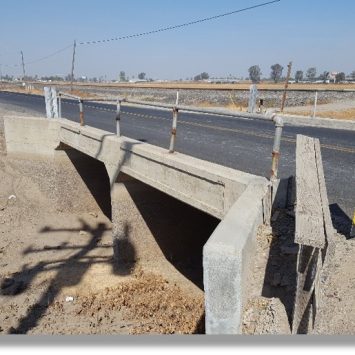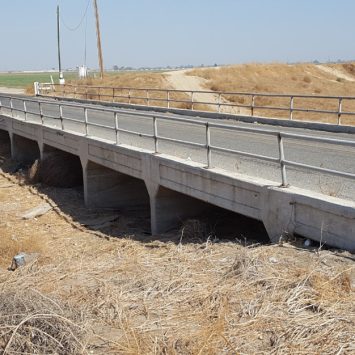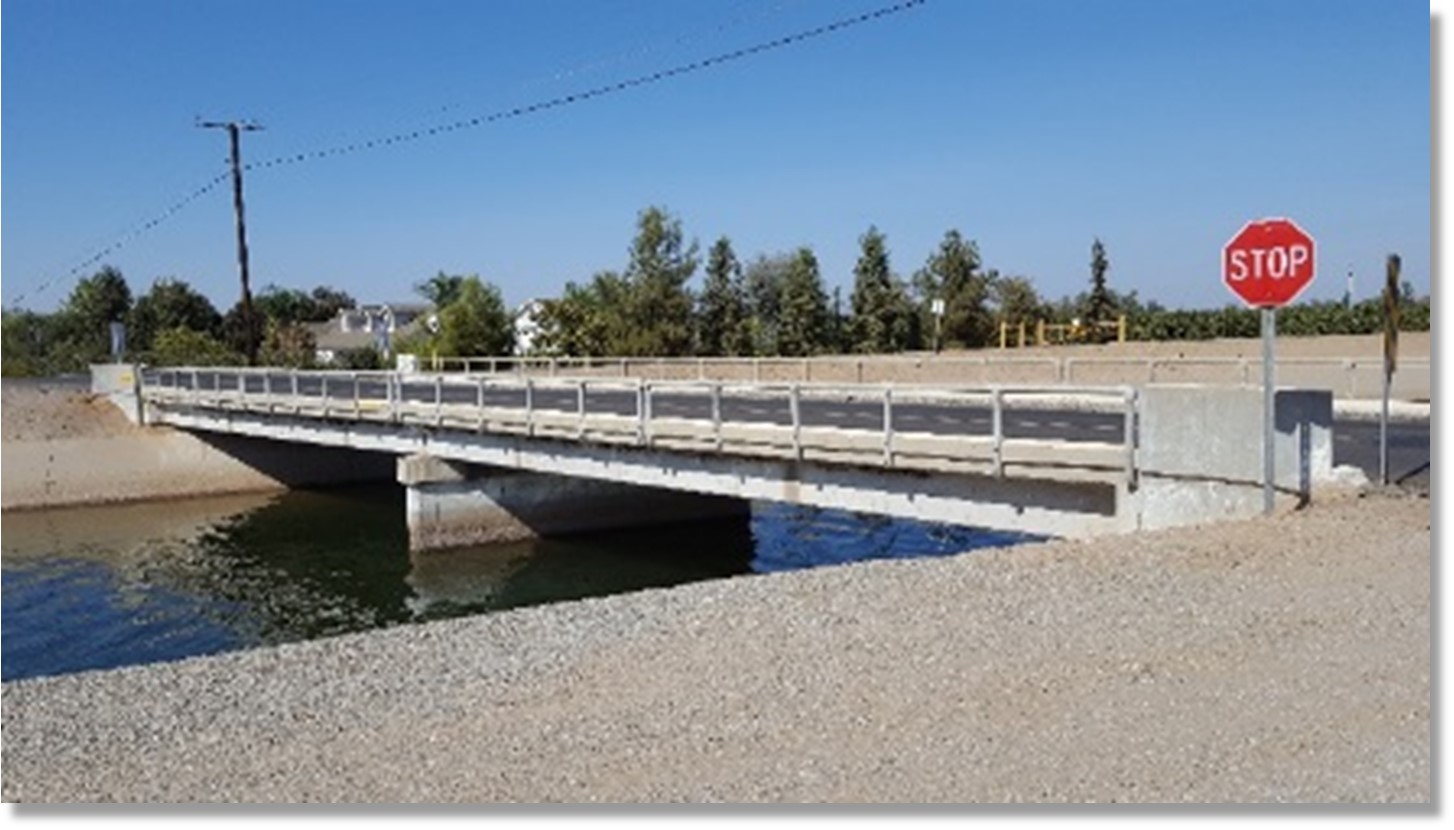
About the project
- Tulare County, CA
- Tulare County, CA
The County of Tulare selected NCM to provide on-call bridge/structures engineering and project delivery services. Through this contract, the County leveraged federal HBP funding to complete a BPMP for the County’s bridge inventory followed by design of five bridge replacements. Construction of Avenue 392 Bridge over Sand Creek is complete; construction of Avenue 364 over Cottonwood Creek is nearly finished; both Road D112 bridges are in Final
Design and Avenue 174 Bridge is currently at the Type Selection phase.
Project Description
- Bridge Preventive Maintenance Program: NCM developed the Bridge Preventive Maintenance Program (BPMP) for the County’s inventory of more than 340 bridges using fi eld review documentation compiled by the County. The completed plan covers 210 bridges with a total program cost of approximately $30 million.
- Avenue 364 Bridge over Cottonwood Creek: The existing Avenue 364 bridge has a history of cracking, delaminating and spalling and is flagged as Structurally Deficient (SD). Due to substandard deck width and moderate ADT, the bridge is also flagged as Functionally Obsolete (FO). NCM completed design of a replacement bridge featuring a 3-span configuration with a cast-in-place reinforced concrete slab superstructure supported on CIDH piles over the environmentally sensitive creek.
- Avenue 392 Bridge over Sand Creek: The existing bridge hydraulic opening is of insufficient size and constricts creek flows and is flagged as Functionally Obsolete (FO) with a Sufficiency Rating (SR) of 48.4. To correct the FO flag, and to improve channel hydraulics, the existing bridge was flagged for replacement. NCM designed a 3-span cast-in-place reinforced concrete slab superstructure on CISS piles and Class 140 piles at abutments.
- Avenue 174 Bridge over Friant-Kern Canal: The existing bridge is a 2-span structure comprised of cast-in-place reinforced concrete T-beams supported on a pier wall located at the centerline of the Friant-Kern Canal and strutted abutments; all founded on spread footings. The bridge will be replaced with a structure having a total length of approximately 100 feet and a 2-span precast prestressed concrete voided slab configuration with pier wall. Vertical profile constraints dictated the selection of type with the low profi le of a prestressed slab best mitigating the structure depth impacts on the roadway approaches.
- Road D112 Bates Slough Box Culvert: The existing structure is a 2-cell RC culvert supported on spread footings. Replacement of the structure will be completed with a two-cell reinforced concrete box culvert. NCM is responsible for preliminary engineering, bridge type selection, oversight of environmental clearance, utilities, roadway and bridge design, development of PS&E and bid and construction support.
- Road D112 N. Branch Tule River Bridge: The existing structure crosses the North Branch of the Tule River, a part of a network of crossings including Route 99, N Thompson Road, UPRR track, and Road D112. This branch was studied and deemed necessary to continue conveyance of design flows in the main river channel under the design flood event. NCM has designed a four-cell reinforced concrete box culvert as a replacement for the current multi-span slab bridge. Wingwalls and rock slope protection mitigate the high scour potential at the site.
As the prime consultant, NCM is responsible for project management, design management, bridge type selection, structural design, environmental clearance support, utility conflict identification and relocation coordination, PS&E development and bid and construction support.

